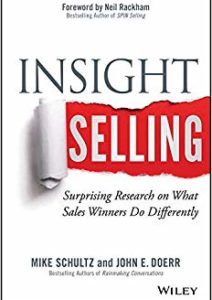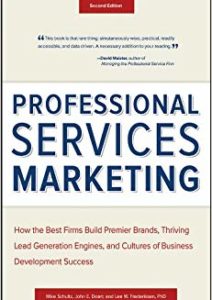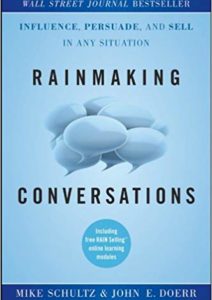57% of the purchase process is complete before buyers have their first interaction with a seller.1
This is one of the most cited statistics in the sales world these days—as if it’s some kind of big news.
Wait…so you mean buyers do research and talk internally before they bring in outsiders? No way, dude! That’s, like, revolutionary!
Puh-leez…
In fact, all it says is that thoughtful buyers explore ideas with their internal colleagues. They discuss what they want to do, what they want as an outcome, and what the options are to get them there. They get their ducks in a row to an extent, before consulting with outsiders.
Seems logical to me.
Certainly the Internet has changed the buying process significantly. It’s a powerful tool for initial research. However, buyers still struggle with the same fundamental challenges as in the past. They still must:
-
Find new ways to improve and innovate in their businesses
-
Choose the right courses of action
-
Choose the right partners
-
Succeed more, fail less
Just because buyers have access to more information than ever, does not mean they are more decisive or making better decisions.
The central argument in the book The Paradox of Choice by Barry Schwartz is that more options and more information can paralyze decision makers.2 Although Schwartz relates this notion to consumers, it equally applies to business decision makers.
The Internet gives buyers a lot more choice and information, but the information is often hyperbolic. All of the options promise excellent results, massive ROI, and superior value. How can buyers know which would really bring the most value to their business?
Information does not equal knowledge. What buyers don’t have—and what they desperately need—is insight.
Not only do they need it, they want it. The challenge is figuring out when they want it. At what point in the purchase process are buyers most receptive to messages from sellers?
The Information Technology Services Marketing Association (ITSMA) and CFO Magazine recently asked 270 technology buyers just this question. The results? 70% of buyers want to engage with sales reps before they finalize a short list of potential sellers.
Even more striking, 47% of buyers want to engage with sellers when they are searching for insight on what to do and what options are possible for achieving their goals.
Sellers, however, largely do not have (or use) the skills to add value here. A recent Forrester Research study asked buyers, “Are meetings with salespeople valuable and live up to your expectations?” Only 39% of executives said yes.3 Most buyers simply don’t find sellers valuable.
In our study of over 700 B2B purchases, we learned that sales winners are 3X more likely to educate prospects with new ideas and perspectives than second-place finishers. In fact, providing this type of insight was the #1 factor that most separated sales winners from the rest, according to buyers themselves.
When a buyer sees a seller as a source of insight, they see how the seller can help them succeed. They’re more likely to involve them earlier in the process. The more that seller is involved early in the process, the more likely they are to win.
Perhaps if sellers had the skill to provide more insight, the “57% of the purchase decision” statistic would change. If sellers did a better job inspiring buyers with insights and ideas, they’d be included earlier.
In any case, the fact remains: buyers want to talk to sellers. It’s up to sellers, however, to get in the conversation earlier, and succeed when they get there.
Resources:
1. CEB Marketing Leadership Council. The Digital Evolution in B2B Marketing. Arlington, VA: The Corporate Executive Board, 2012.
2. Schwartz, Barry. The Paradox of Choice: Why More Is Less. New York: Harper Perennial, 2005.
3. Lindwall, Mark. “Where Have All The Good Times Gone? The party is dying out for companies whose salespeople lack empathy for executive buyers.” Mark Lindwall’s Blog. Forrester Research. October 16, 2013.
This post originally appeared on the RAIN Group blog.














